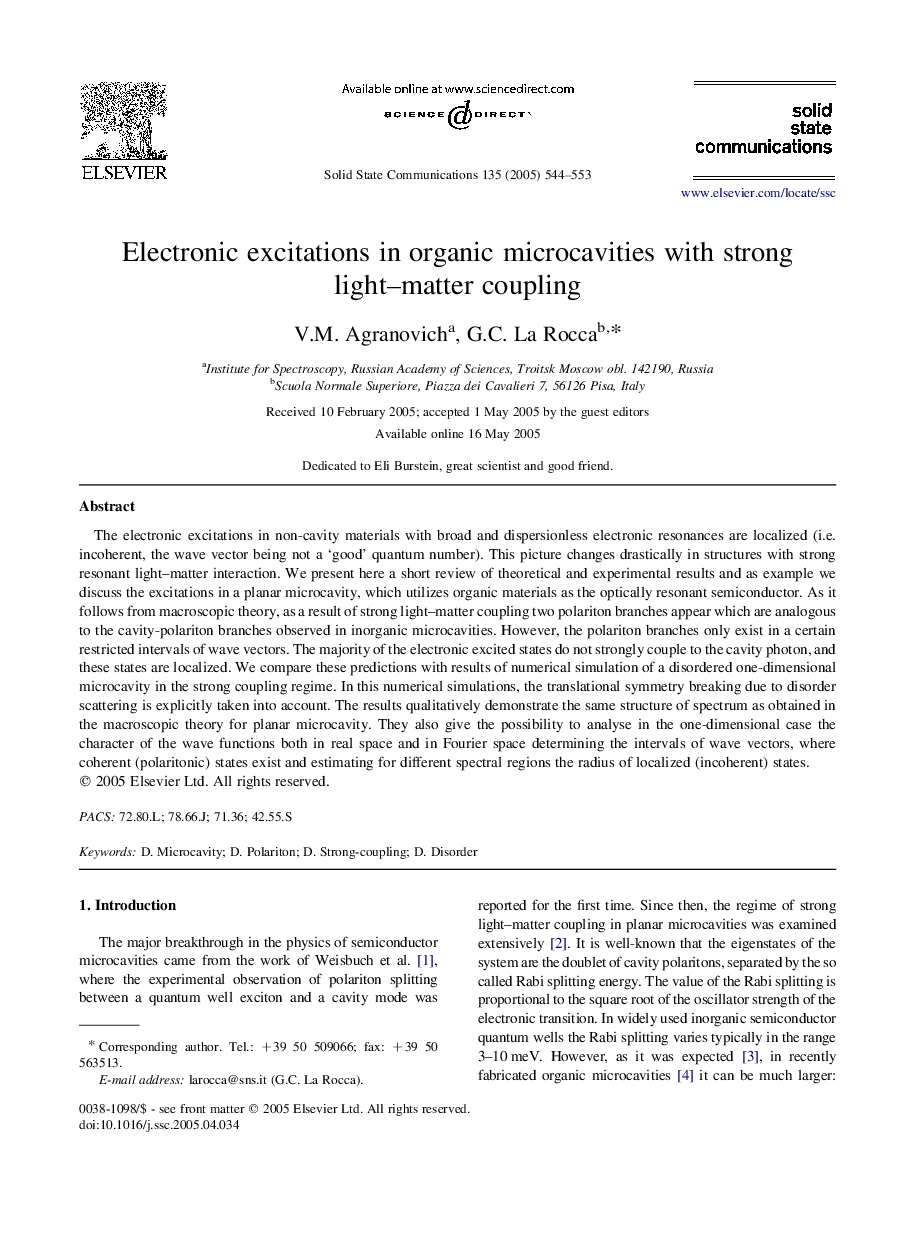| کد مقاله | کد نشریه | سال انتشار | مقاله انگلیسی | نسخه تمام متن |
|---|---|---|---|---|
| 9801928 | 1515735 | 2005 | 10 صفحه PDF | دانلود رایگان |
عنوان انگلیسی مقاله ISI
Electronic excitations in organic microcavities with strong light-matter coupling
دانلود مقاله + سفارش ترجمه
دانلود مقاله ISI انگلیسی
رایگان برای ایرانیان
موضوعات مرتبط
مهندسی و علوم پایه
مهندسی مواد
دانش مواد (عمومی)
پیش نمایش صفحه اول مقاله

چکیده انگلیسی
The electronic excitations in non-cavity materials with broad and dispersionless electronic resonances are localized (i.e. incoherent, the wave vector being not a 'good' quantum number). This picture changes drastically in structures with strong resonant light-matter interaction. We present here a short review of theoretical and experimental results and as example we discuss the excitations in a planar microcavity, which utilizes organic materials as the optically resonant semiconductor. As it follows from macroscopic theory, as a result of strong light-matter coupling two polariton branches appear which are analogous to the cavity-polariton branches observed in inorganic microcavities. However, the polariton branches only exist in a certain restricted intervals of wave vectors. The majority of the electronic excited states do not strongly couple to the cavity photon, and these states are localized. We compare these predictions with results of numerical simulation of a disordered one-dimensional microcavity in the strong coupling regime. In this numerical simulations, the translational symmetry breaking due to disorder scattering is explicitly taken into account. The results qualitatively demonstrate the same structure of spectrum as obtained in the macroscopic theory for planar microcavity. They also give the possibility to analyse in the one-dimensional case the character of the wave functions both in real space and in Fourier space determining the intervals of wave vectors, where coherent (polaritonic) states exist and estimating for different spectral regions the radius of localized (incoherent) states.
ناشر
Database: Elsevier - ScienceDirect (ساینس دایرکت)
Journal: Solid State Communications - Volume 135, Issues 9â10, September 2005, Pages 544-553
Journal: Solid State Communications - Volume 135, Issues 9â10, September 2005, Pages 544-553
نویسندگان
V.M. Agranovich, G.C. La Rocca,